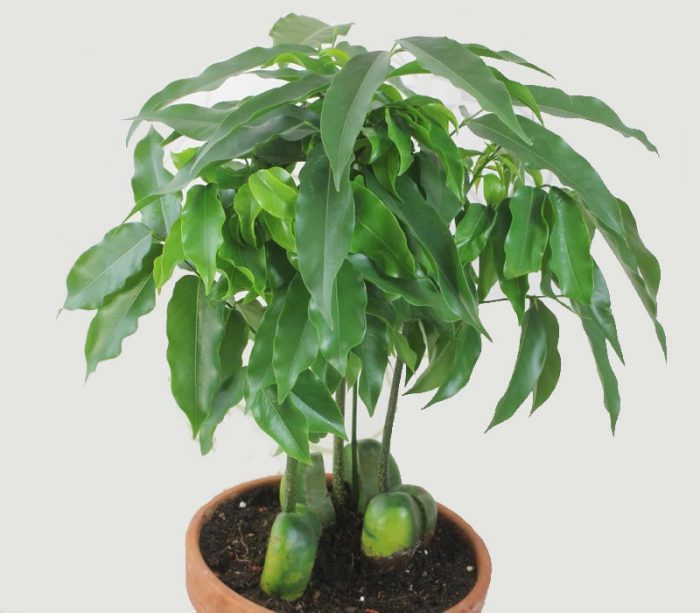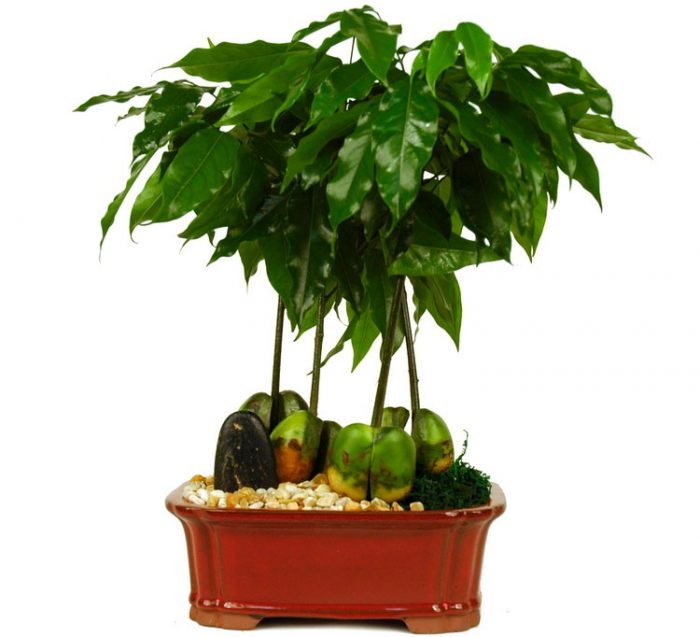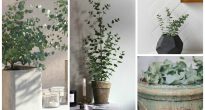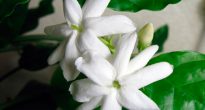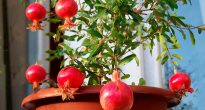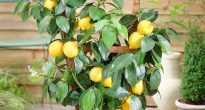A feature of a plant such as indoor chestnut (castanospermum) are two large cotyledons that are very similar to the chestnut fruit. From these cotyledons, the shoot of the plant itself rises.
Castanospermum, sometimes referred to as chestnutospermum, occurs naturally in Australia. In its homeland, this plant also has such a name as "Moreton Coast chestnut", as well as "black beans". The plant received these names for its very bright fruits of a rather large size, ripening in long pods.
At home, only 1 species is grown, which is called southern castanospermum (Castanospermum austarale). It should be noted that this is the only species of this genus. It is directly related to the legume family and is not a chestnut, despite some similarities.
Indoor chestnut, like most members of the legume family, is capable of fixing atmospheric nitrogen.
In the wild, this plant is found in the rainy, humid forests located on the east coast of Australia. When keeping it at home, it is imperative to take this into account, namely, that castanospermum needs warmth, high humidity and a large amount of sunlight all year round.
In nature, this plant is an evergreen tree that can reach a height of 10 meters. But when grown indoors, it is much less.
If you decide to grow indoor chestnuts at home, then you must definitely remember the fact that it contains a large amount of toxic substances such as saponins. In this regard, this plant must be placed out of the reach of small children and pets.
It is interesting to know that the natives of Australia eat castanospermum seeds, despite the fact that they contain poison. In order to neutralize the poison, they cut the seeds in two, then soak and boil them for a long time.
Content
Castanospermum care at home
Temperature regime
The plant needs warmth all year round. So, it feels best at temperatures from 16 to 23 degrees. It should be borne in mind that in winter the temperature in the room where the room chestnut is located should not drop less than 16 degrees.
Illumination
It feels best in a small partial shade, while you need to protect the plant from direct sunlight.
How to water
Watering in the warm season should be plentiful, but at the same time you need to ensure that the liquid does not stagnate in the soil. For watering, you need to use water exclusively at room temperature. In the cold season, watering should be moderate. Moreover, it must be carried out as the substrate dries.
In winter, the plant needs regular spraying. To do this, take well-settled lukewarm water.
Earth mix
Suitable soil should be loose and neutral in acidity. To prepare a suitable soil mixture, you need to combine leaf, sod and compost soil, as well as coarse sand, which should be taken in equal proportions. It is also recommended to add some lumps of clay and brick chips. Don't forget a good drainage layer.
Fertilizer
You need to feed a room chestnut all year round once every 2 weeks. For this, organic fertilizers are used.
Transplant features
After the grown castanospermum uses all the nutrients that are in the cotyledons, it will be necessary to transplant into a larger pot. At the same time, during transplantation, do not forget that the indoor chestnut has very powerful roots.
Reproduction methods
This plant can be propagated by seeds. Before sowing, the seeds are immersed in warm water for 24 hours. Then they are germinated, for this, maintaining a constant temperature of 18 to 25 degrees.
In indoor conditions, the tree does not bloom.
Pests and diseases
The plant can settle mealybugs, thrips, spider mites or scabbards.
Due to improper care when growing indoor chestnuts, the following difficulties may arise:
- Pale foliage - the plant lacks light.
- Plant growth has slowed down - needs feeding.
- Dry leaf tips - too dry air, you need to spray more often indoor chestnut.
- Yellow foliage in summer - due to intense lighting.
- In winter, the foliage withers and falls - the room is very cold.

